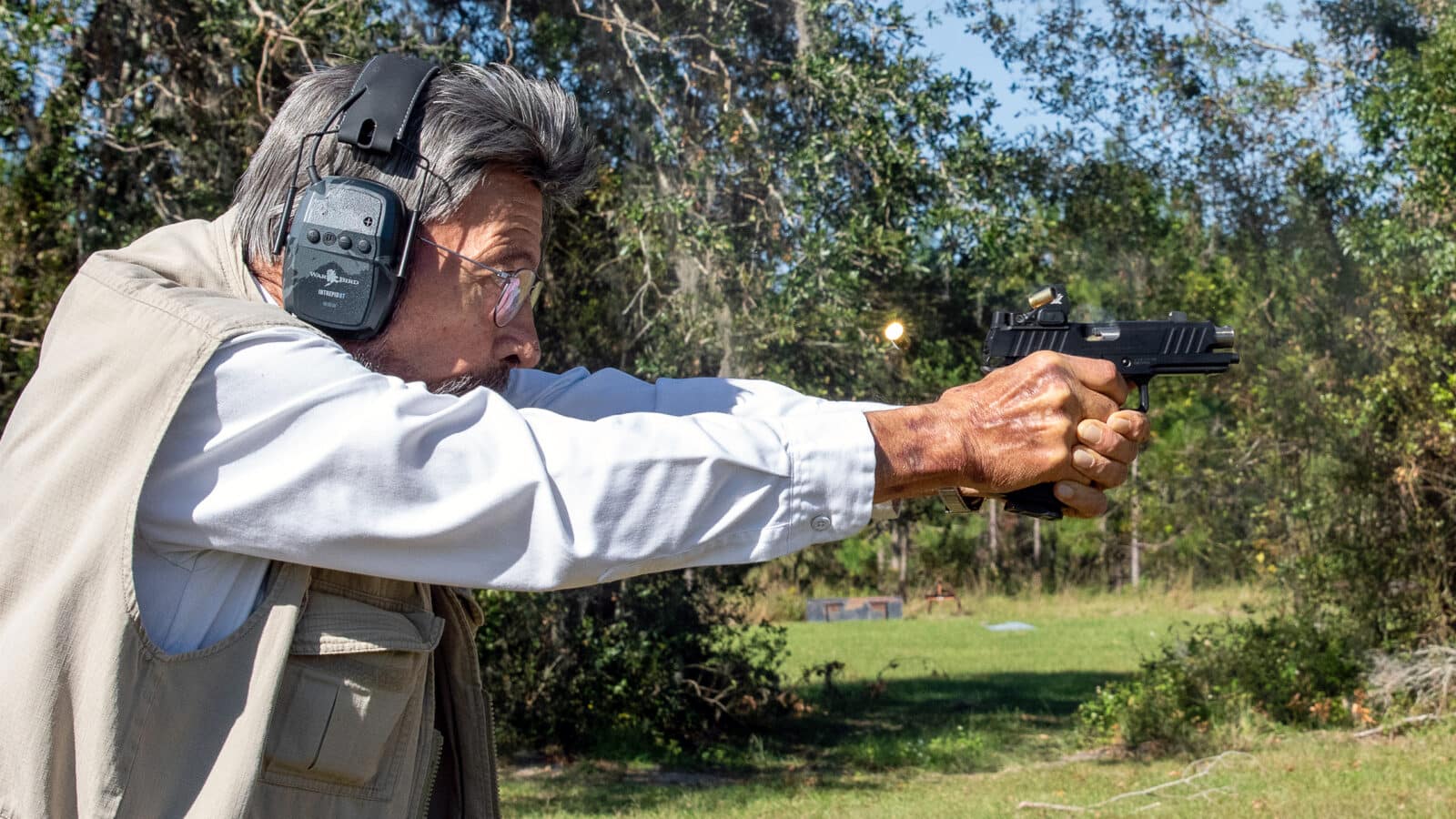When Springfield came out with their 9mm Prodigy, a higher-capacity double stack magazine in a 1911 platform — it garnered great deal of attention. I shot heck out of the first one I got in my hands, shot a match with it in which it did fine, and liked it enough to buy the test sample for my own use. That’s something I don’t normally do.
Following that, Springfield Armory brought out new variant called the 1911 DS Prodigy Comp AOS. To translate the alphabet soup, DS denotes the double stack magazine, and AOS indicates the company’s Agency Optic System, a concept created in concert with Agency Arms that allows the pistol to be fitted with an optical sight mounting plate specific to the given choice of optic. Our test sample pistol, serial number NMH64456, came to me already mounted with a Vortex Defender-ST red dot sight.
Our test gun came with suppressor-height sights, and when it got to me had already had the red dot co-witnessed with those backup irons. They were readily visible at the bottom of the optic’s window, the rear sight being a generous U-notch and the front, an easy-to-see post with a green tritium night sight insert. The optical sight mount prevents the rear fixed sight from being worked against belt or holster to cycle the slide in a “wounded defender” situation, but that’s a moot point since the optical sight itself can do that job even better. I should note that the Vortex Defender-ST has checkering in the front face of its housing to facilitate that potentially life-saving feature — good tactical thinking there, Vortex!
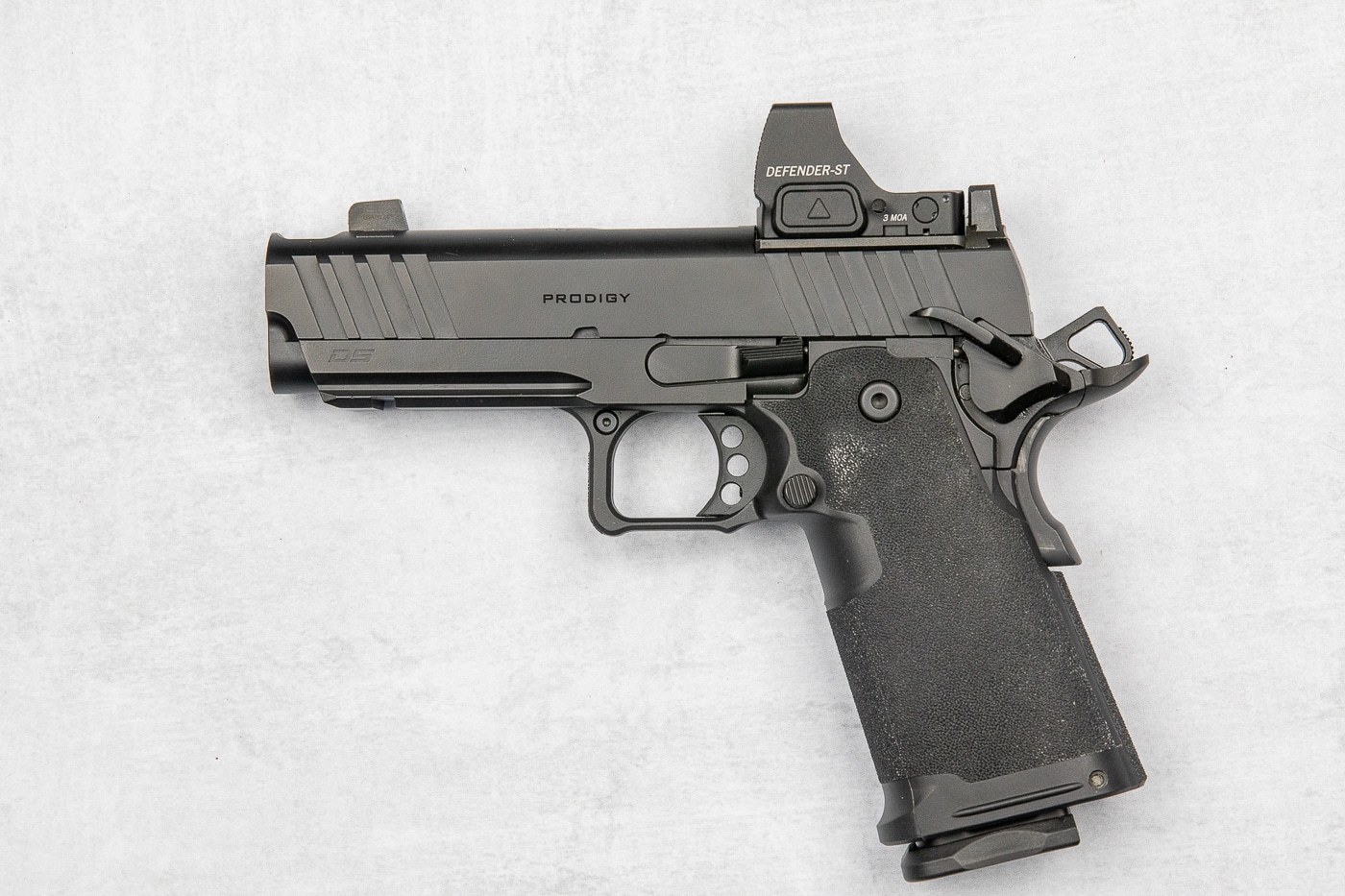
The rationale of the double stack mag is more bullets — always a good feature to have. The test gun came with two magazines — a 17-round with a medium-thickness butt plate and a 20-rounder which, of course, extended further from the beveled magazine well. In addition, Springfield offers optional 26-rounders.
The gun came with finely stippled grips — front, back, and sides — that no one on our larger than usual test team disliked. It’s the same Adaptive Grip Texture you’ll find on the Hellcat or Echelon.
What distinguishes this latest Prodigy variation from others in the series is, of course, its integral recoil compensator — hence the “Comp” in the name. That bears discussion.
About the Comp
Recoil compensators go back to the Cutts Compensator, found on the original Thompson submachine gun and often added to shotguns before WWII. Back in the day, to reduce the recoil in a pistol or revolver the shooter either had to go to a less-powerful load or switch to a heavier gun.
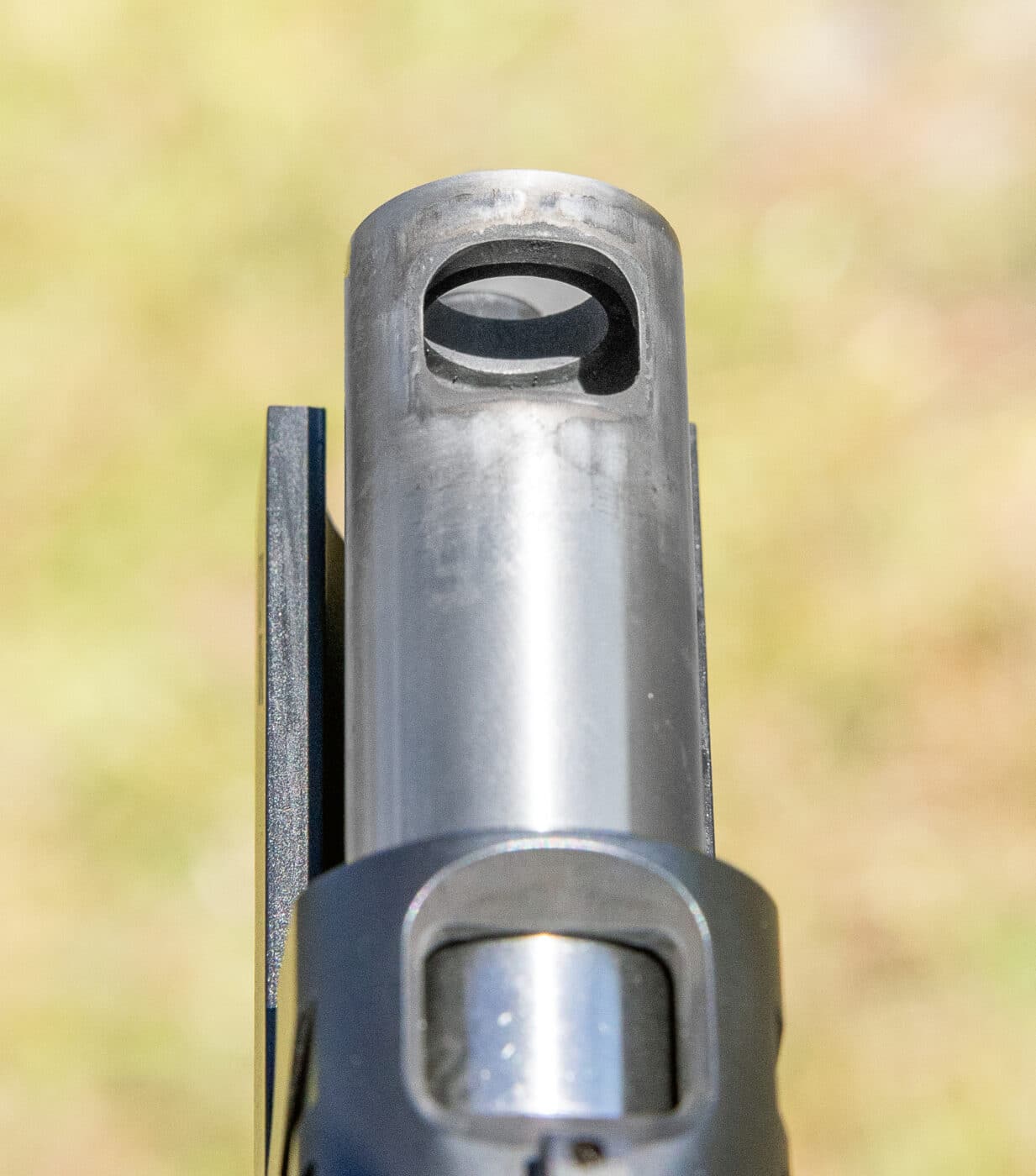
In handguns, the first recoil reduction concept located at the front of the gun was my friend Larry Kelly’s Mag-Na-Port, circa 1969. Slots were cut in the top front of the barrel that redirected a fired cartridges expanding gases upward to help keep the muzzle down, and proved particularly popular on Magnum revolvers.
In the 1970’s, Jim Clark created the Pin Gun with a weight added at the muzzle end to hold the front of the gun down, and then Mike Plaxco and Bill Wilson popularized expansion chamber compensators. Of all those great master pistolsmiths, only Bill is still with us.
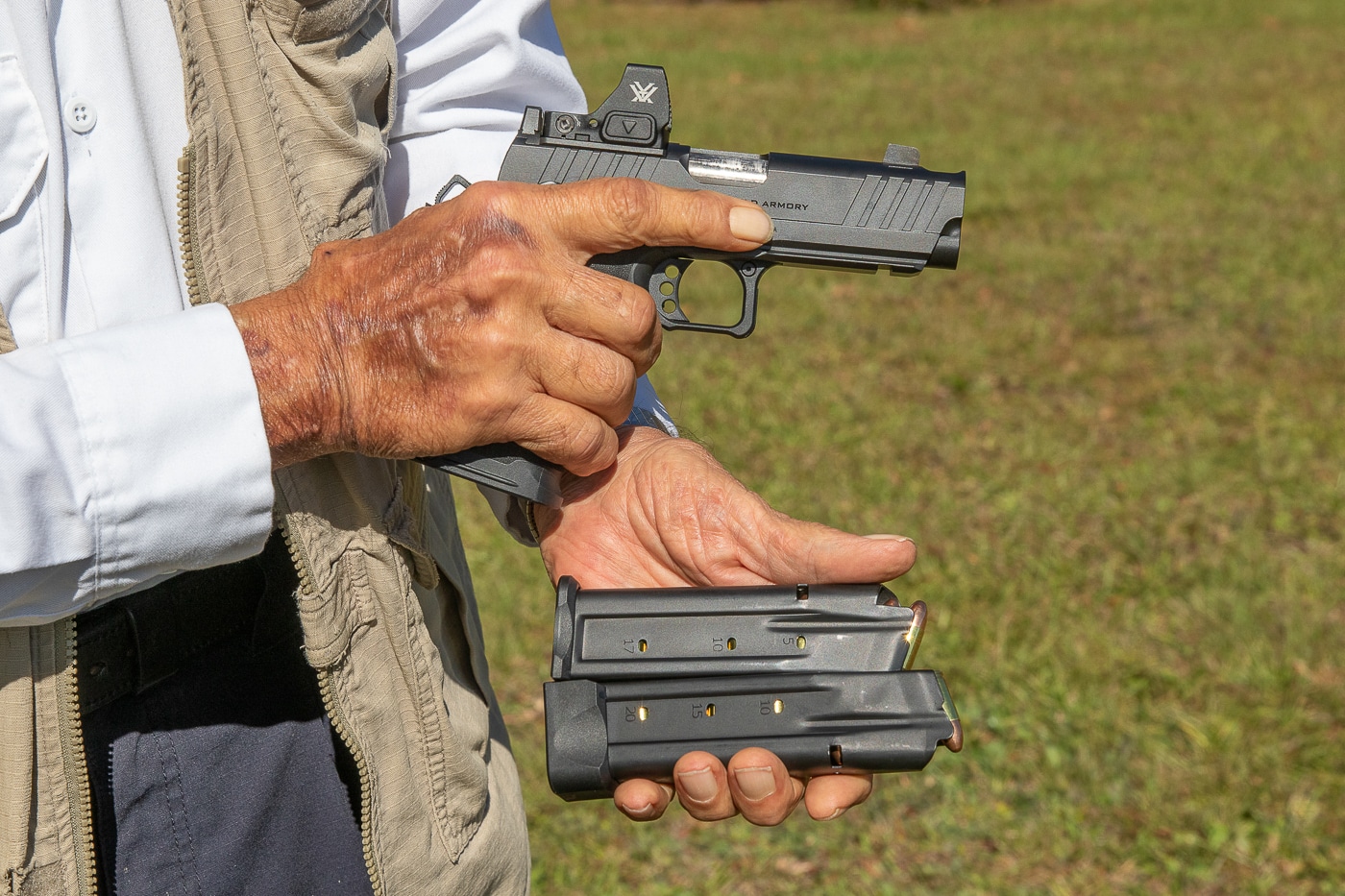
That thing on the end of the comped Prodigy is an expansion chamber compensator, which does two good things at once. The open top jets expanding gases upward to counter muzzle rise, and as that gas leaves the now internal muzzle spreading in a conical pattern, it hits the “shelf” (for want of a better term) of steel that surrounds the hole for the bullet in the front of the comp. This force pushes the whole gun forward and thus reduces rearward “kick.”
Expansion chamber compensators are usually add-ons. However, this one has ingeniously been machined out of the bull barrel itself. It’s so inconspicuous that it hasn’t even been mentioned in reviews I’ve seen. But it’s there.
The standard Prodigy is available in 5.0” and 4.25” barrel lengths. The barrel including integral comp on our test sample is 4.25”, meaning the bullet is leaving the rifled part of the barrel assembly at about 3.65”. Fortunately, 9mm Luger is less prone to velocity loss with shorter barrels than, say, .45 ACP.
Shooting the Prodigy 4.25 Comp
The comfortable beavertail grip safety was perfectly adjusted out of the box. So was the ambidextrous thumb safety — positive, not too firm, not too easy to move. A “momma bear” adjustment: just right.
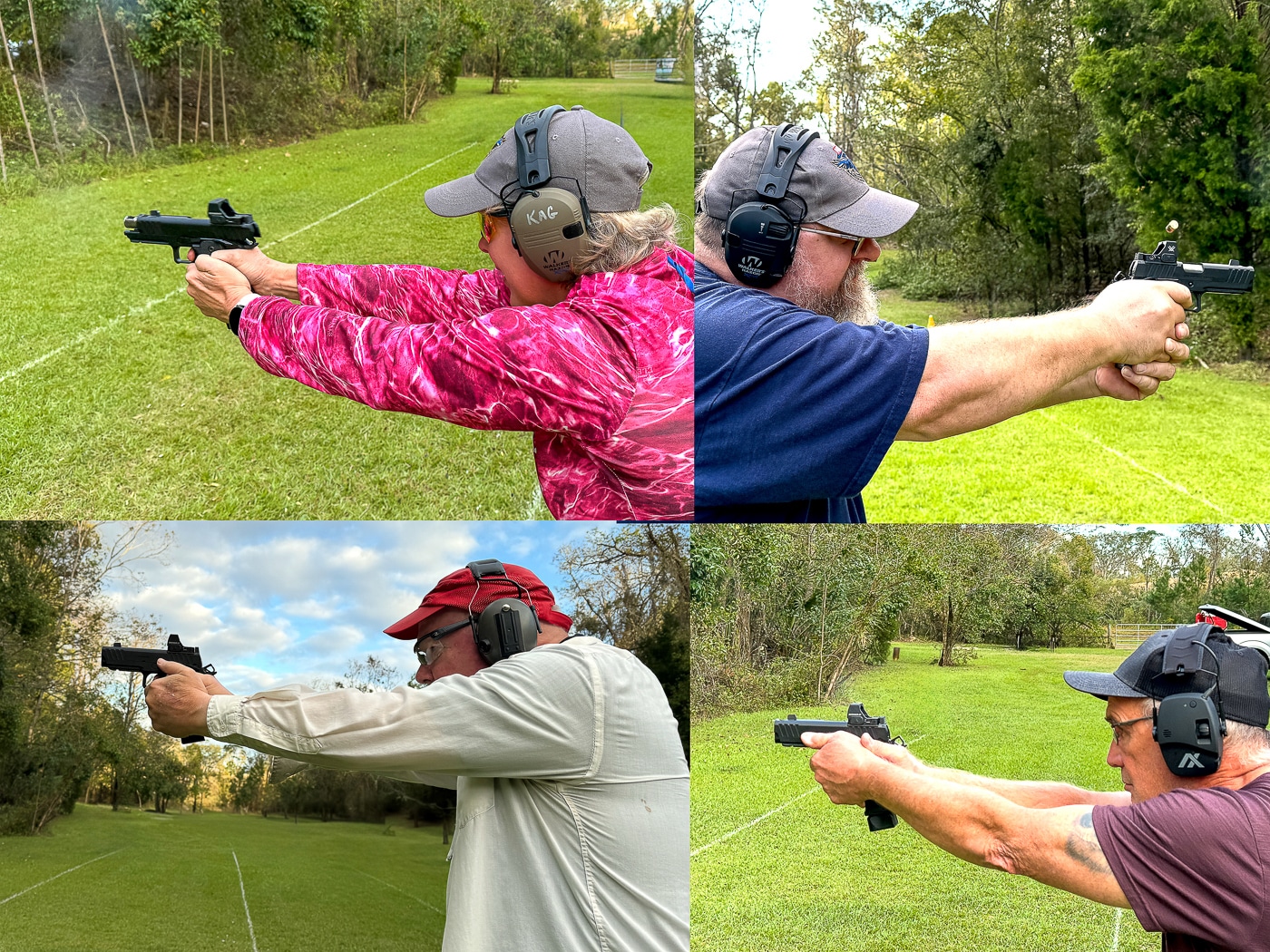
Measured on a Lyman digital trigger pull gauge, pull weight averaged 4.698 pounds. Pull characteristics were basically standard for a well-adjusted 1911 pistol: short take-up until the trigger finger meets a firm “wall” of resistance, followed by a surprise break with no palpable backlash, that is, trigger movement rearward after the sear releases.
Scoffers ask, “Who needs a recoil compensator on a 9mm?” The answer, of course is (A) the particularly recoil-sensitive shooter and (B) anyone who wants absolute fastest recovery of aim between shots.
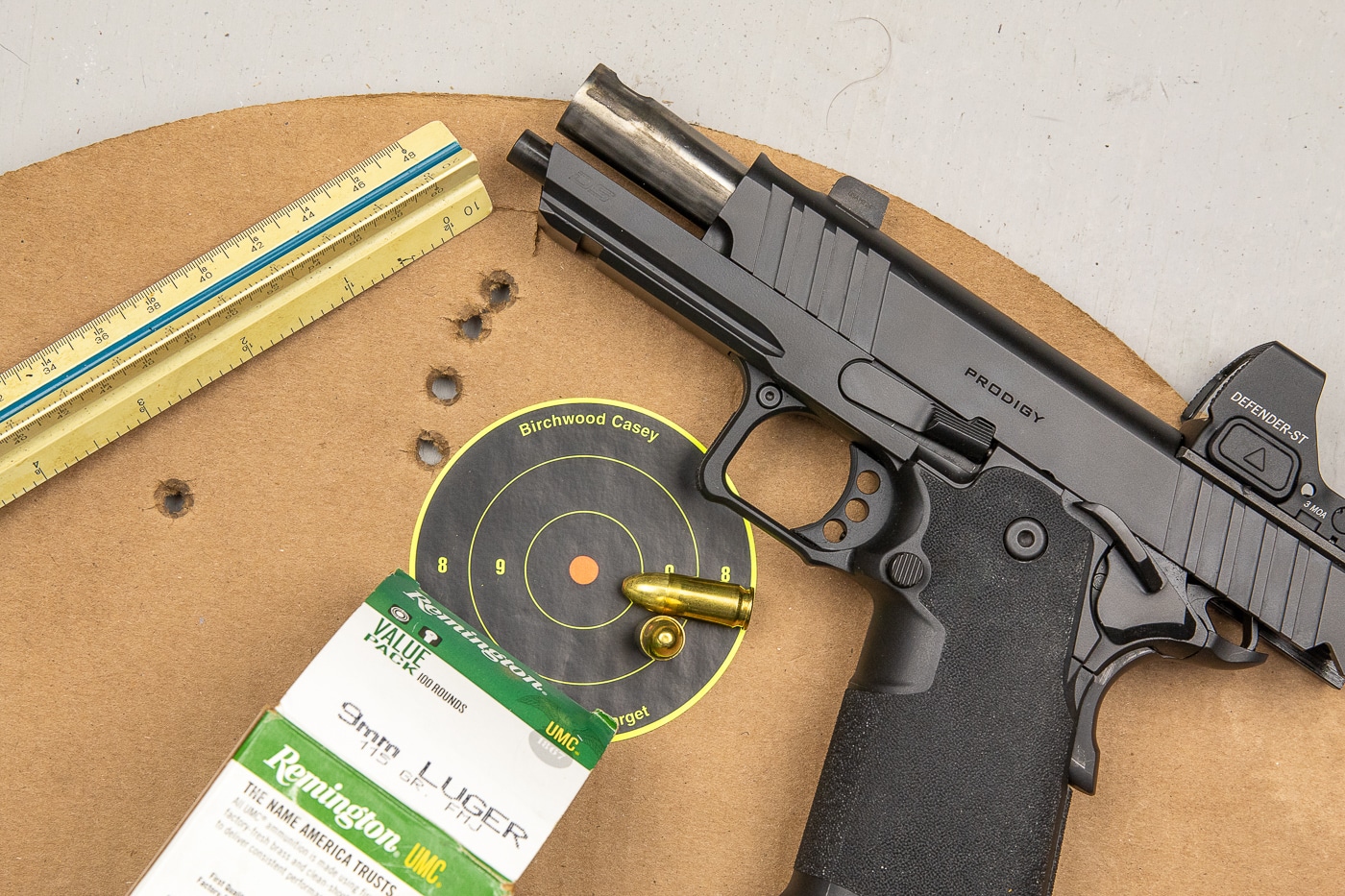
With a solid stance and grasp, I found I could race the comped Prodigy as fast as I could work the trigger, five to six shots per second, and the dot just danced around the point of aim. A glance at the action photos accompanying this article will show ejected airborne spent casings vis-à-vis the gun’s orientation to the target to prove the point.
One caveat with this or any other ported handgun: Be aware that when fired from a tight retention position with the grip level with the shooter’s torso, that hot gas and any powder particles in can be jetted upward right toward the shooter’s face and eyes.

Some barrel porting goes upward at 45 degrees. This one appears to send the burning gases straight up from the muzzle. This means that with this particular gun, the integrally comped Springfield Armory Prodigy, you can make the retention position work by turning the pistol 90 degrees outward, so the port is pointed out to the side, making firing from here safer for the shooter. Within arm’s length this also better aligns the trajectory with the centerline of a homicidal opponent’s body.
Accuracy? Off the bench at 25 yards this pistol punched five rounds of inexpensive Remington-UMC 115-gr. full metal jacket into 3.40” with four of those in 1.50” and the best three under an inch, 0.95”. All measurements were center to center of the farthest bullet holes and to the nearest 0.05”.
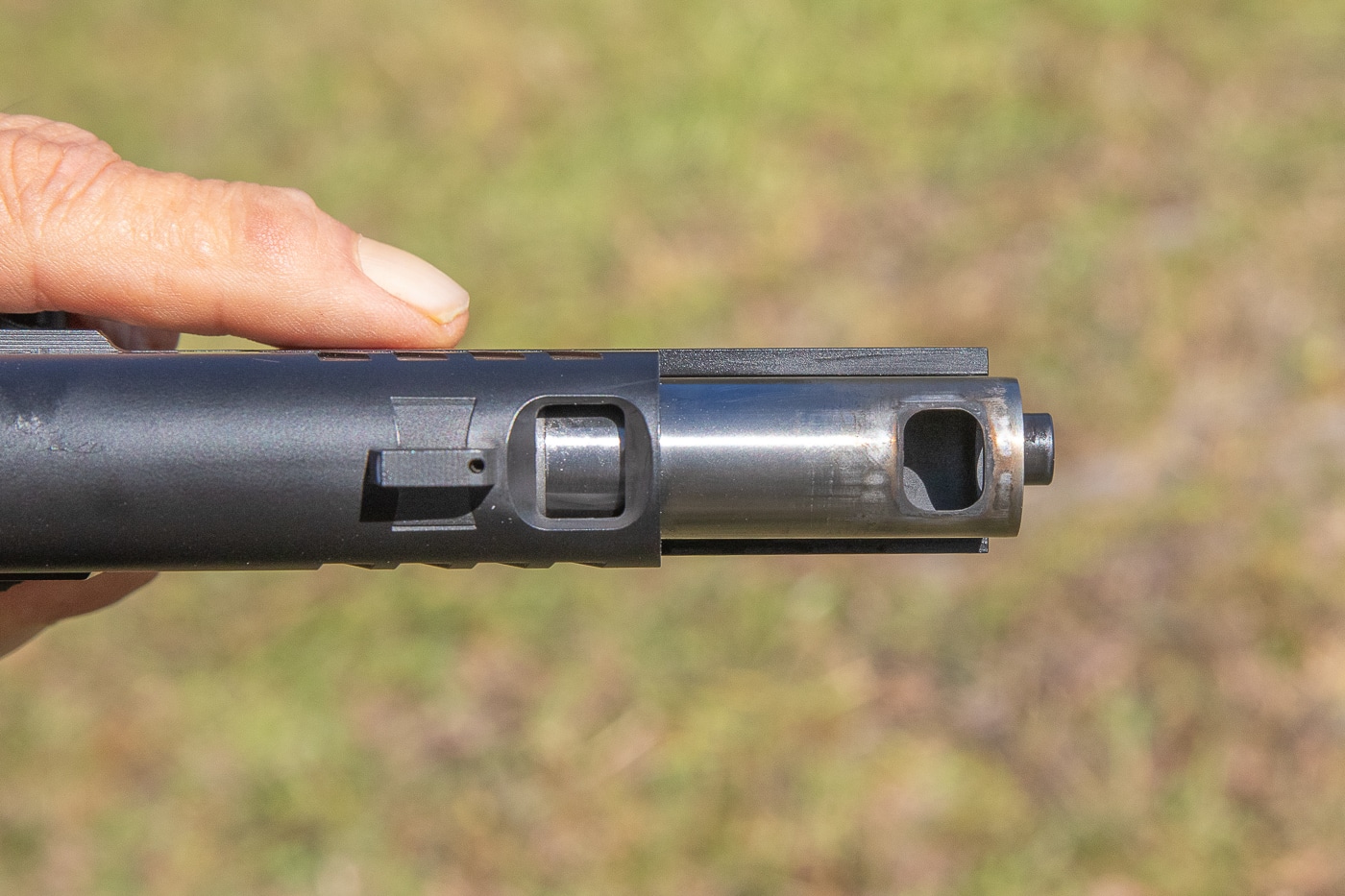
Twenty-some years ago in the pages of American Handgunner, the late Charlie Petty and I proved my hypothesis that these two measurements show what the gun can do in experienced hands under perfect conditions (five-shot group) while the “best three” measurement factors out enough human error to roughly duplicate what the same gun and load will do for all five from a Ransom machine rest, which most of our readers don’t have. I also ran some 147-gr. Winchester subsonic jacketed truncated cone bullets, and I got 3.85” (5) and 1.85”(3), respectively.
“Ask the Person Who’s Shot One”
I was teaching a MAG-40 class during the test period, and after class one day invited staff and students to try the gun. Several did so. Some typical comments follow.
Robby Harris, one of our training staff, is an award-winning shooter in the various “combat competitions.” He said, “I found the Prodigy as configured to be easy to fire quickly and accurately. I was able to quickly get splits in the center of the USPSA target at 10 out 15 yards on par with my usual completion setup guns. The Vortex red dot was quick, crisp and clear. The metal magazines were easy in and quick out, they performed as they should; kudos to SA for that. 2011 style guns can be mag sensitive. The single action trigger was good for this price point, and the thumb safety was positive and well shaped. I have fired 2011s of much higher price points, and I find it hard to justify the price difference. Anyone looking for an entry level 2011 for self defense or even Carry Optics division in IDPA will find this model very usable.”
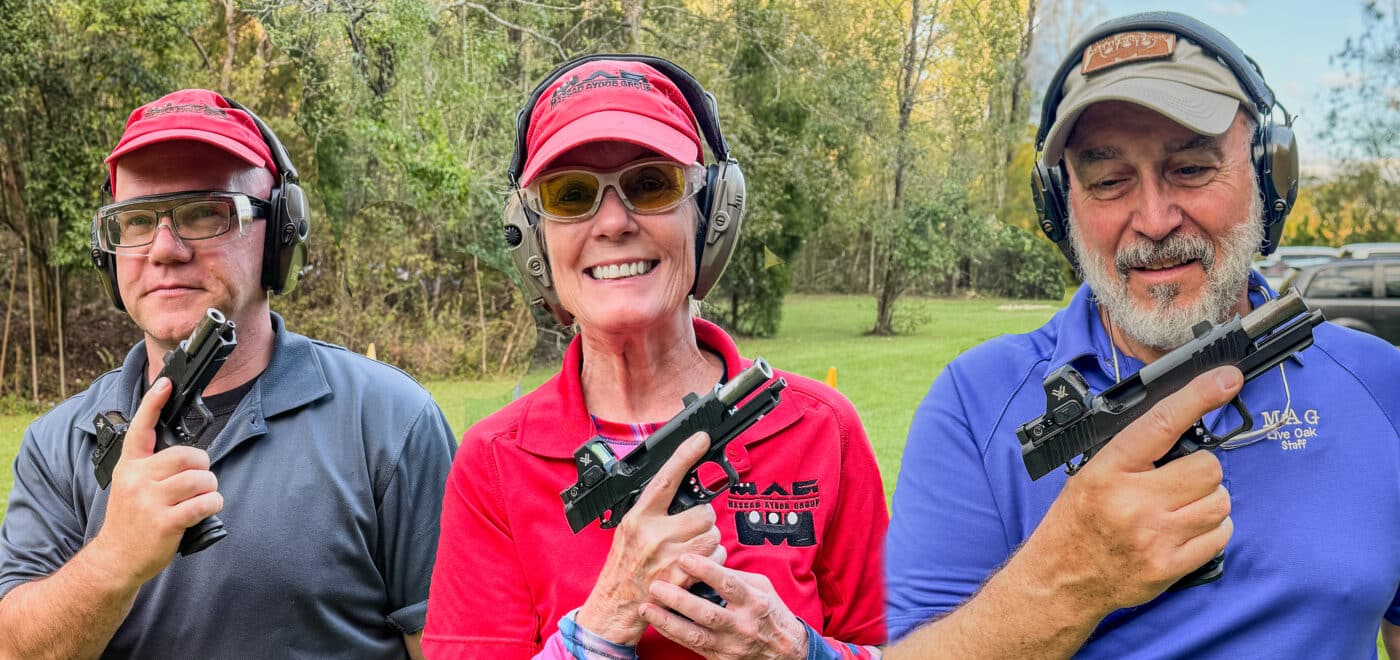
Andrew Fritzinger is one of our highest-level graduates and an ace instructor. He commented, “Substantial but manageable weight of the double stack 2011 combined with the crisp single action trigger made for some impressive small groups when shot handheld at 10-15 yards using Blazer 115-gr. ammo. Reliability, which is frequently a concern with some 2011 designs, was no issue here and there were no malfunctions during my testing. The polymer grip on the Prodigy Comp provided a comfortable shooting experience versus some more aggressively textured grips on other, all-metal 2011s I am accustomed to shooting. Definitely a plus for large round count, multi-day classes like MAG 40. Recoil, hardly an issue with a 2011 anyway, was even further reduced by the compensator. But hey, I’ll take every little edge I can get!”
Barbara Benson, a champion bench rest shooter, knows how to press a trigger and favors three-pound pulls on her competition pistols, but had no trouble running the Prodigy Comp and appreciated its lack of muzzle rise. Her comment was the most succinct: “I like it.”
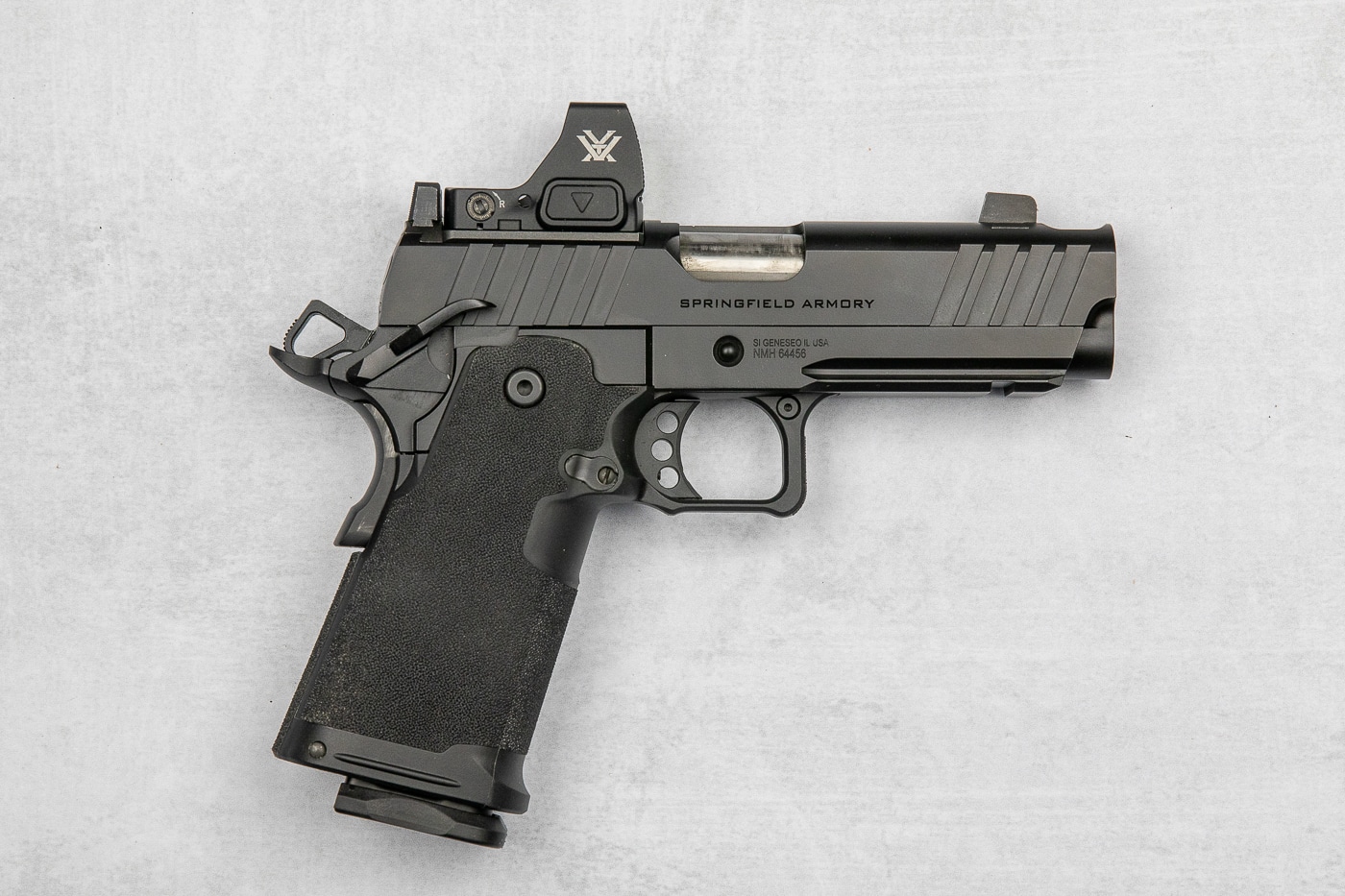
Among the students who tried it, about the only complaint came from Brian Fry, who found it slightly large for his hands but said he’d consider buying one. Randy Grimes wrote, “I never fired a 1911 and never thought much about them. I was surprised and delighted by how smooth it (the Prodigy) was and how it felt in my hands. It made me want one.” Rich Shields commented approvingly on the Prodigy’s balance, its smoothness, and its light recoil.
By all accounts, the Springfield Armory Prodigy Comp is a “best buy” in the increased-capacity 9mm 1911 field at $1,632 MSRP, and everyone on the test team liked it — ditto the Vortex sight at $469.99 MSRP.
Editor’s Note: Be sure to check out The Armory Life Forum, where you can comment about our daily articles, as well as just talk guns and gear. Click the “Go To Forum Thread” link below to jump in!


